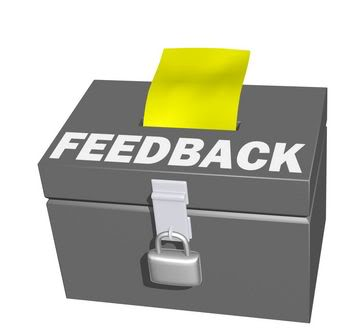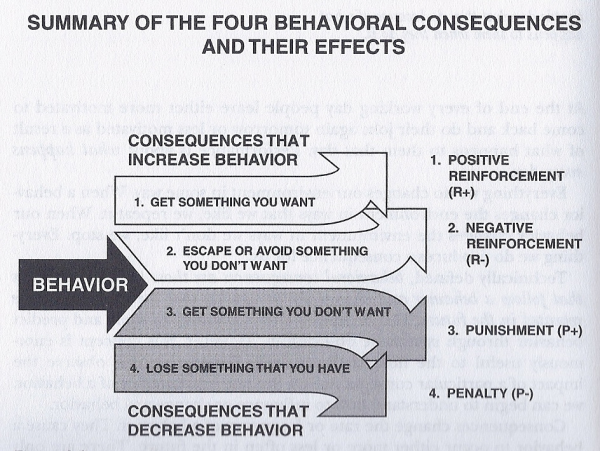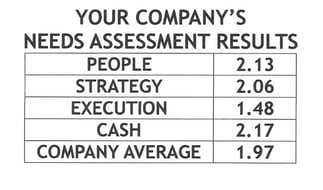At Positioning Systems and Gazelles you know by now that we’re big fans of Jim Collins books Good to Great, Built to Last, and How the Mighty Fall. When Collins new book, Great by Choice arrived last week I just had to pick it up. If you receive Verne Harnish’s weekly newsletter you know that he’s reading it as well.
Strategic Discipline Blog
Douglas A Wick
Recent Posts
Jim Collins' New Book “Great By Choice” Supports Strategic Discipline
Posted by Douglas A Wick on Tue, Oct 18, 2011
Topics: Discipline, Good to Great, Strategic Discipline, Great by Choice, Jim Collins
What Are Your Employees Thinking? Critical Employee Feedback
Posted by Douglas A Wick on Thu, Oct 13, 2011
Imagine it’s the biggest moment of your life. Your opportunity for glory. The moment professionally you’ve practiced and prepared for. Now imagine it’s in front of a live audience and millions of TV viewers. In fact it’s the biggest stage in the world! It’s a critical moment for you and the people you work with.
Topics: Employee Feedback, employee engagement, Sports World
Topics: Employee Feedback, weekly meetings, positive reinforcement, priorities, Balance
Aubrey Daniels in Bringing Out the Best in People insists leaderships’ role in the employee feedback loop is, “… is not to find fault or place blame, but to analyze why people are behaving as they are, and modify the consequences to promote the behavior they need.”
Topics: Strategic Discipline, leadership, positive reinforcement, Balance
Usually during tough times managers get tough. They succumb to the pressure and use more punishment and negative reinforcement. Why is this a recipe for disaster? If both positive and negative reinforcement get results why should we care?
Topics: Employee Feedback, employee performance, positive reinforcement, negative reinforcement
Topics: employee performance, positive reinforcement, Rockefeller Habits Checklist
Employee Feedback Measurement for Positive Reinforcement
Posted by Douglas A Wick on Mon, Sep 26, 2011
We’ve looked at the importance and frequency of positive reinforcement in previous blogs, How the Best Managers and Leaders Deliver Positive Reinforcement and Employee Feedback – The Need for Frequent Positive Reinforcement. Employee Feedback falls into Strategic Discipline's fundamental practices for effective meeting rhythms. When we address customer and employee feedback in workshops and with our clients, frequently there’s confusion and misunderstanding about what this means. It’s often because companies have their rhythms with regard to employees and staff and forget how critical their happiness and engagement can impact the bottom line growth of their business.
Topics: Employee Feedback, employee performance, positive reinforcement, metrics, productivity
Employee Feedback – The Need for Frequent Positive Reinforcement
Posted by Douglas A Wick on Thu, Sep 22, 2011
How often do you need to reinforce? Dawn of Impatience shares Aubrey Daniel’s Bringing Out the Best In People’s view why since 1984 the influence and commitment to positive reinforcement has steadily increased.
Topics: Employee Feedback, weekly meetings, employee performance, positive reinforcement
How the Best Managers and Leaders Deliver Positive Reinforcement
Posted by Douglas A Wick on Mon, Sep 19, 2011
Small things add up. When it comes to producing results from positive reinforcement a small difference influences results dramatically. Most effective leaders, managers, and supervisors do not necessarily reinforce more often than ineffective ones. It’s the detail of what they focus on that makes them better. Discipline to this detail compounds over time. It delivers steady pressure on the fly wheel which Jim Collins notes distinguishes the Good to Great companies. Eventually it provides the impetus to breakthrough. There is no miracle moment. Breakthrough only comes through daily discipline of doing the right things right.
Topics: Employee Feedback, Bringing Out the Best In People, employee performance, Aubrey Daniels, positive reinforcement
Customer & Employee Feedback from Weekly Meetings Drives Business Growth
Posted by Douglas A Wick on Thu, Sep 15, 2011
Topics: Customer Feedback, Net Promoter Score, weekly meetings, Strategic Discipline, customer satisfaction metrics

-resized-600.jpg)


-resized-600.jpg)










.jpeg?width=150&height=135&name=Hand%20with%20marker%20writing%20the%20question%20Whats%20Next_%20(1).jpeg)

